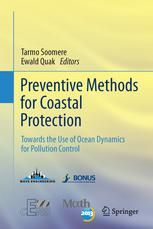

Most ebook files are in PDF format, so you can easily read them using various software such as Foxit Reader or directly on the Google Chrome browser.
Some ebook files are released by publishers in other formats such as .awz, .mobi, .epub, .fb2, etc. You may need to install specific software to read these formats on mobile/PC, such as Calibre.
Please read the tutorial at this link: https://ebookbell.com/faq
We offer FREE conversion to the popular formats you request; however, this may take some time. Therefore, right after payment, please email us, and we will try to provide the service as quickly as possible.
For some exceptional file formats or broken links (if any), please refrain from opening any disputes. Instead, email us first, and we will try to assist within a maximum of 6 hours.
EbookBell Team

4.1
40 reviewsThe aim of the book is to present for non-specialist researchers as well as for experts a comprehensive overview of the background, key ideas, basic methods, implementation details and a selection of solutions offered by a novel technology for the optimisation of the location of dangerous offshore activities in terms of environmental criteria, as developed in the course of the BalticWay project. The book consists of two parts. The first part introduces the basic principles of ocean modeling and depicts the long way from the generic principles to the practical modeling of oil spills and of the propagation of other adverse impacts. The second part focuses on the techniques for solving the inverse problem of the quantification of offshore areas with respect to their potential to serve as a source of environmental danger to vulnerable regions (such as spawning, nursing or also tourist areas). The chapters are written in a tutorial style; they are mostly self-contained and understandable for non-specialist researchers and students. They are carefully peer-reviewed by international experts. The goal was to produce a book that highlights all key steps, methods, models and data sets it is necessary to combine in order to produce a practically usable technology and/or decision support system for a particular sea region. Thus the book is useful not only as a description and a manual of this particular technology but also as a roadmap highlighting the complicated technical issues of ocean modeling for practical purposes. It describes the approaches taken by the authors in an understandable way and thus is useful for educational purposes, such as a course in industrially and environmentally relevant applications of ocean modeling.